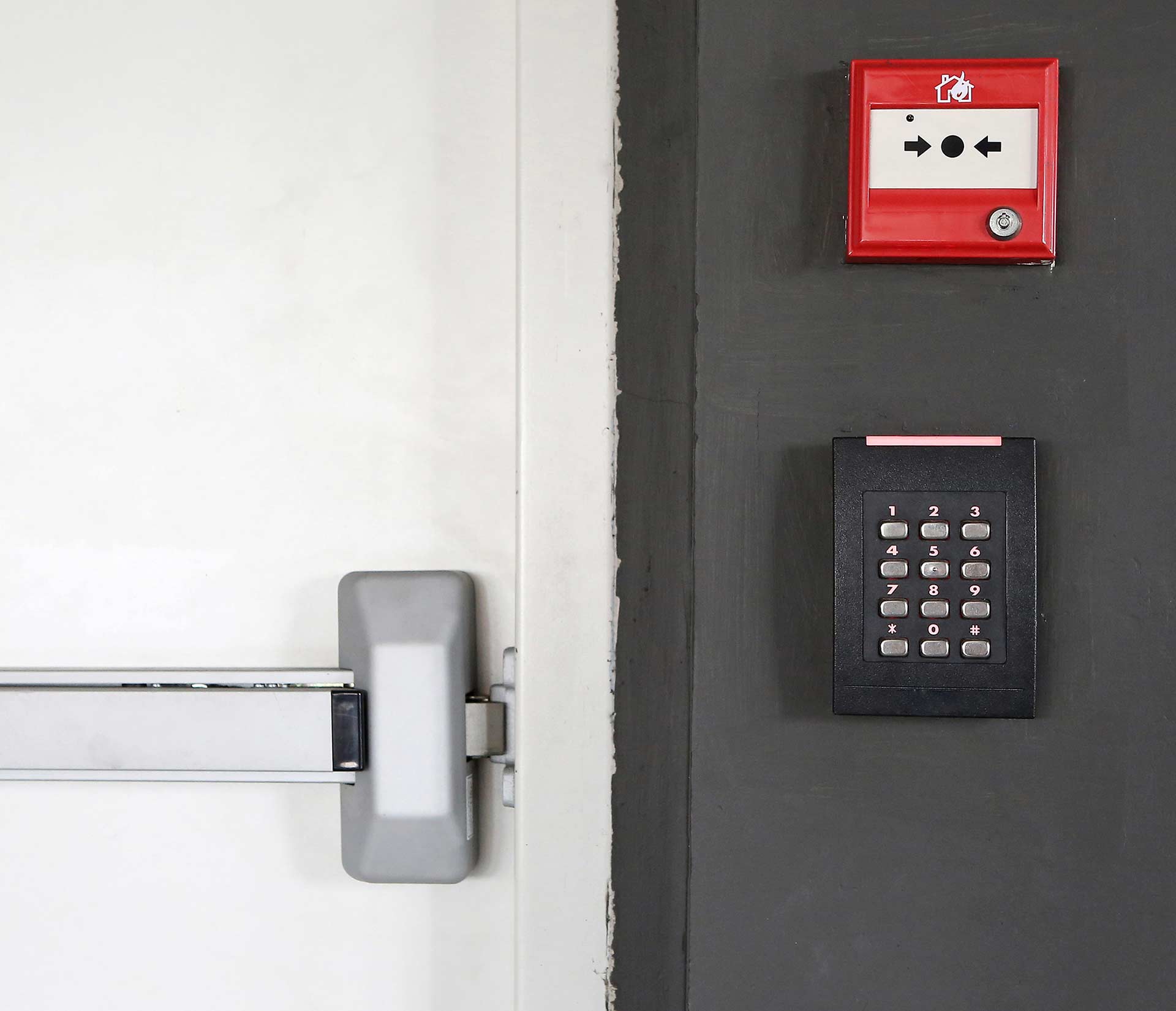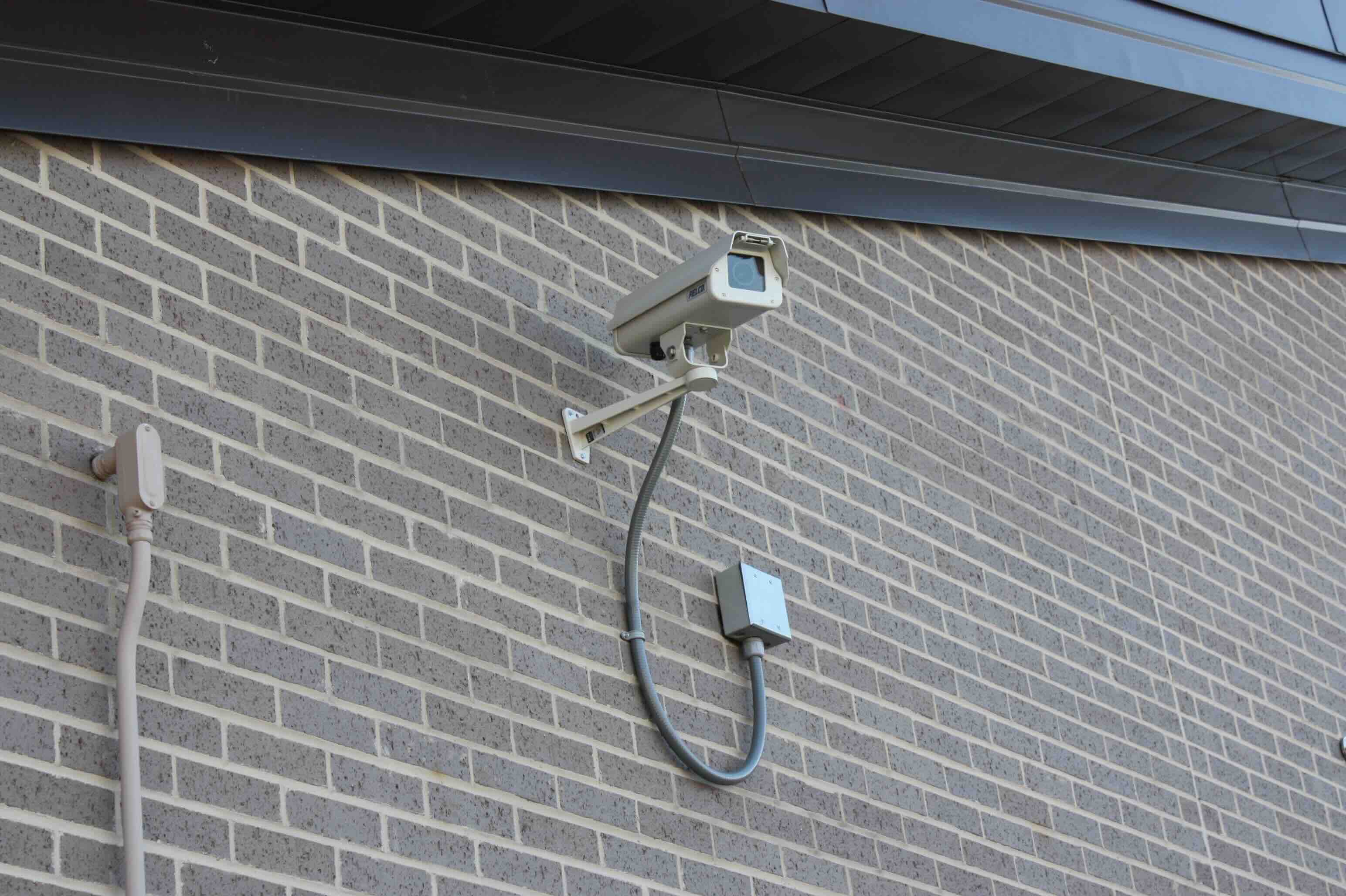Home>Home Security and Surveillance>How Does Intrusion Detection System Work


Home Security and Surveillance
How Does Intrusion Detection System Work
Modified: March 7, 2024
Learn how intrusion detection system works to ensure your home security and surveillance. Discover the latest technology and techniques to protect your property.
(Many of the links in this article redirect to a specific reviewed product. Your purchase of these products through affiliate links helps to generate commission for Storables.com, at no extra cost. Learn more)
Introduction
Welcome to the world of home security and surveillance. In today’s increasingly connected world, it has become essential to protect our homes and loved ones from potential threats. This is where an Intrusion Detection System (IDS) comes into play. An IDS is a crucial component of a comprehensive home security system that helps detect unauthorized access and malicious activities.
An IDS works by monitoring network traffic, analyzing patterns, and identifying anomalies that may indicate a security breach. It acts as a virtual security guard, constantly vigilant and ready to respond to any potential security threats. Whether you are concerned about protecting your physical assets or safeguarding your privacy, an IDS is a powerful tool to have in your arsenal.
In this article, we will explore the key components of an IDS, different detection methods, the deployment process, and the limitations and challenges associated with these systems. So, let’s dive in and unravel the inner workings of an Intrusion Detection System.
Key Takeaways:
- An Intrusion Detection System (IDS) acts as a virtual security guard for homes and networks, constantly monitoring and responding to potential security threats by analyzing patterns and detecting anomalies.
- Deploying an IDS involves careful planning, network assessment, and continuous monitoring to ensure optimal performance, providing a robust defense against security breaches.
Read more: Where To Place Intrusion Detection Systems
Key Components of an Intrusion Detection System
An Intrusion Detection System (IDS) is composed of several key components that work together to provide comprehensive security coverage for your home. Understanding these components will help you grasp how an IDS functions and why it is an essential part of any security setup.
- Sensors: Sensors are the eyes and ears of an IDS. These can include motion sensors, door/window sensors, and surveillance cameras. They detect physical movements and changes in the environment and transmit that information to the central control unit.
- Central Control Unit: The central control unit is the brain of the IDS. It processes the information received from the sensors, analyzes it, and triggers appropriate responses. It acts as the command center, orchestrating the entire intrusion detection process.
- Database: The database stores important information such as known patterns of intrusions, malicious IP addresses, and system logs. It serves as a reference point for the IDS to compare incoming data and identify potential threats.
- Alerting Mechanism: The alerting mechanism is responsible for notifying the homeowner or security personnel of any detected intrusions or suspicious activities. This can be in the form of sound alarms, email notifications, or mobile app alerts.
- User Interface: The user interface provides an easy-to-use platform for homeowners to monitor and manage their IDS. It allows them to customize settings, view system logs, and configure alerting preferences.
These components work together seamlessly to ensure maximum security coverage and minimize the risk of unauthorized access to your home. Each component plays a vital role in the overall functionality of the IDS, making it a robust and reliable security solution.
Signature-based Detection
Signature-based detection is one of the most common methods used by an Intrusion Detection System (IDS) to identify known threats and attacks. It works on the principle of comparing incoming data with a database of pre-defined attack signatures or patterns. If a match is found, the IDS raises an alert or takes necessary action to mitigate the threat.
The process of signature-based detection involves three main steps: signature creation, signature storage, and signature matching.
- Signature Creation: Security experts and researchers analyze known attacks and develop signatures or patterns that represent those attacks. These signatures can include specific pieces of code, network patterns, or behavior attributes that are unique to each attack.
- Signature Storage: The created signatures are stored in a database within the IDS. This database acts as a reference point for the IDS to compare incoming data against the known attack signatures.
- Signature Matching: When the IDS receives network traffic or system logs, it analyzes the data and searches for matches with the stored signatures. If a match is found, it triggers an alert or initiates an appropriate response, such as blocking the suspicious activity or notifying the user.
Signature-based detection is effective in identifying and blocking known threats and attacks. It provides a sense of security by leveraging the collective knowledge of security experts and researchers who continuously update the signature database with the latest attack patterns.
However, signature-based detection has its limitations. It can only detect attacks that have known signatures, making it ineffective against zero-day attacks or new, previously unseen threats. Attackers can also evade detection by modifying attack signatures or using encryption techniques to obfuscate their activities.
Despite its drawbacks, signature-based detection remains a valuable tool in an IDS’s arsenal. It serves as the first line of defense against known threats and attacks, protecting your home and network from common malicious activities.
Anomaly-based Detection
Anomaly-based detection is a powerful technique used by Intrusion Detection Systems (IDS) to identify unusual or abnormal behavior that deviates from established patterns. Unlike signature-based detection, which relies on known attack signatures, anomaly-based detection focuses on detecting deviations from normal system behavior.
The process of anomaly-based detection involves three main steps: profiling, baselining, and anomaly detection.
- Profiling: In the profiling phase, the IDS gathers information about the normal behavior of various system components, including network traffic, system processes, and user behavior. This information is used to create a baseline of the system’s normal behavior.
- Baselining: Using the information collected during the profiling phase, the IDS establishes a baseline of normal behavior for the system. This baseline includes thresholds and ranges for various attributes and parameters that are considered normal for the system.
- Anomaly Detection: Once the baseline is established, the IDS continuously monitors the system and compares the current behavior with the established baseline. If any deviation or anomaly is detected, such as unusual network traffic patterns or abnormal system resource usage, the IDS raises an alert or takes appropriate action.
Anomaly-based detection is particularly effective at detecting unknown or zero-day attacks, as it does not rely on pre-defined attack signatures. It can identify abnormal activities that may indicate a potential intrusion attempt or malicious behavior.
However, one challenge of anomaly-based detection is the potential for false positives. Normal variations in system behavior or legitimate user activities can sometimes be flagged as anomalies, leading to unnecessary alerts and potential disruption. False negatives are also a concern, where subtle or sophisticated attacks go undetected if they mimic normal behavior too closely.
To address these challenges, anomaly-based detection systems often employ machine learning algorithms and statistical analysis techniques to improve accuracy and reduce false alarms. These algorithms learn from historical data and continuously adapt to evolving patterns and behaviors.
Anomaly-based detection complements signature-based detection, providing an additional layer of defense against unknown or emerging threats. By continuously monitoring system behavior and detecting anomalies, IDS equipped with anomaly-based detection can quickly identify and mitigate potential security breaches, enhancing the overall security of your home and network.
Hybrid Detection
Hybrid detection is a combination of both signature-based and anomaly-based detection techniques, harnessing the strengths of both approaches to provide a more comprehensive and accurate detection mechanism. By leveraging the advantages of both methods, hybrid detection aims to improve detection rates while minimizing false alarms.
In a hybrid detection system, the IDS uses signature-based detection to identify well-known attacks and threats that have specific patterns or signatures associated with them. This approach is effective in detecting known threats and provides a reliable defense against common attacks. However, signature-based detection alone may struggle to identify new or zero-day attacks that do not have pre-defined signatures.
To overcome this limitation, hybrid detection incorporates anomaly-based detection. This approach allows the IDS to detect abnormal behaviors and deviations from established baselines, including zero-day attacks or novel attack patterns that have not been observed before. By continuously monitoring system behavior and comparing it to the established baseline, the IDS can alert the user or initiate appropriate actions in response to suspicious activities.
The combination of signature-based and anomaly-based detection enhances the accuracy and efficiency of the IDS, reducing both false positives and false negatives. Signature-based detection acts as a reliable first line of defense, quickly identifying known threats and minimizing the risk of successful attacks. On the other hand, anomaly-based detection adds an additional layer of protection, capable of detecting new and emerging threats that may bypass signature-based systems.
Hybrid detection also helps in reducing the maintenance overhead of constantly updating the signature database. As new attack signatures are discovered, they can be incorporated into the system, while the anomaly-based detection component continues to provide coverage against unknown threats.
However, it is important to consider that hybrid detection systems require more computational resources and may introduce an increased level of complexity. Configuring and fine-tuning the hybrid detection system to balance accuracy and performance can be a challenge, and regular monitoring and evaluation are necessary to ensure its effectiveness.
Overall, the hybrid detection approach offers a robust and effective solution for intrusion detection, combining the benefits of signature-based and anomaly-based detection. By leveraging a hybrid approach, IDS can provide stronger security coverage, better adaptability to evolving threats, and improved overall performance in safeguarding your home and network.
Read more: How To Test Intrusion Detection System
Network-based versus Host-based Intrusion Detection Systems
Intrusion Detection Systems (IDS) can be broadly categorized into two main types: network-based IDS (NIDS) and host-based IDS (HIDS). While both serve the common goal of detecting and preventing unauthorized activities, they differ in their focus and scope of monitoring.
Network-based IDS (NIDS):
A network-based IDS monitors network traffic at the network level. It analyzes packets flowing through the network, inspecting headers, payload, and other network-level attributes. NIDS is typically placed at strategic points in the network infrastructure, such as switches or routers, to capture and analyze traffic from multiple devices.
Key features of NIDS include:
- Network-wide visibility: NIDS can monitor multiple devices and traffic flow across the entire network, providing a centralized view of activity.
- Real-time detection: NIDS can detect and raise alerts for suspicious network activity in real-time, helping to mitigate threats promptly.
- Scalability: NIDS can handle large network traffic volumes and can be deployed in large-scale environments.
- Known-pattern detection: Signature-based detection is common in NIDS, allowing it to detect known attack patterns and signatures.
Host-based IDS (HIDS):
A host-based IDS, as the name suggests, focuses on individual host systems. It monitors the activities and behaviors of specific hosts, including processes, logs, system configurations, and file integrity. HIDS is typically installed on individual computers or servers.
Key features of HIDS include:
- Granular visibility: HIDS provides detailed insight into the activities and changes happening at the host level, including system-level events and user behaviors.
- Comprehensive coverage: HIDS can monitor various aspects of the host, including system logs, file integrity, and user activities, ensuring a comprehensive detection capability.
- Host-specific context: HIDS can analyze activities in the context of the specific host, enabling it to detect deviations from normal behavior for that particular system.
- Behavior-based detection: Anomaly-based detection is commonly used in HIDS, allowing it to identify deviations from normal behavior, even in the absence of known attack signatures.
The choice between NIDS and HIDS depends on the specific security needs of your environment. NIDS is suitable for monitoring network-wide activities, detecting threats that traverse the network, and providing a holistic view of network security. On the other hand, HIDS is ideal for monitoring individual hosts, detecting internal threats, and providing detailed visibility into system-level activities.
Organizations often deploy a combination of both NIDS and HIDS to achieve a layered security approach. This allows for comprehensive security coverage by monitoring both the network infrastructure and individual host systems, leveraging the strengths of each type of IDS.
It’s important to regularly update and maintain both NIDS and HIDS configurations to ensure optimal performance and adaptability to emerging threats and evolving system environments.
An Intrusion Detection System (IDS) works by monitoring network or system activities for malicious activities or policy violations. It can be either host-based or network-based, and uses various detection methods such as signature-based, anomaly-based, or behavior-based to identify potential threats.
Intrusion Detection System Deployment
Deploying an Intrusion Detection System (IDS) is a critical step in strengthening the security of your home or network. Proper deployment ensures that the IDS is effectively monitoring and protecting your environment against potential threats. Here are some key considerations and steps to follow when deploying an IDS:
- Define Objectives: Start by clearly defining your security objectives. Determine what assets you want to protect, what types of attacks to detect, and what level of control and visibility you require.
- Network Infrastructure Assessment: Evaluate your network infrastructure to identify potential vulnerabilities and entry points for attackers. Understand the flow of network traffic, the location of critical assets, and any existing security measures in place.
- Choose IDS Type: Choose the type of IDS that best suits your needs, whether it’s a Network-based IDS (NIDS), a Host-based IDS (HIDS), or a combination of both. Consider factors such as the size of your network, the nature of your assets, and your desired level of visibility.
- IDS Placement: Determine the strategic locations to deploy the IDS sensors or agents. For NIDS, identify key network points where capturing traffic is essential. For HIDS, decide which hosts will have the IDS agents installed, based on criticality and susceptibility to attacks.
- IDS Configuration: Properly configure the IDS to align with your security objectives. Set up appropriate rules, thresholds, and alerting mechanisms. Customize the IDS to focus on the specific types of attacks and behaviors you want to monitor.
- Integration with Existing Security Systems: Integrate the IDS with other security systems you have in place, such as firewalls, antivirus software, or security information and event management (SIEM) systems. This ensures a more unified and centralized approach to security.
- Continuous Monitoring and Evaluation: Regularly monitor and evaluate the performance of the IDS. Stay updated with the latest threat intelligence and attack vectors, and adjust the IDS configuration accordingly. Conduct regular audits and reviews to identify any gaps or weaknesses in the IDS deployment.
- Staff Training: Provide proper training to security personnel or system administrators responsible for managing the IDS. Ensure they have a clear understanding of the IDS functionalities, know how to interpret alerts, and can respond appropriately to detected threats.
- Ongoing Maintenance: Maintain the IDS by applying regular updates, patches, and security fixes. Regularly review the IDS logs and reports to identify any suspicious activities. Stay informed about emerging threats and vulnerabilities, and update the IDS accordingly.
Remember, the effectiveness of an IDS depends not only on its deployment but also on regular maintenance and updates. By following these deployment guidelines and proactively managing your IDS, you can significantly enhance the security defenses of your home or network and mitigate potential security risks.
Intrusion Detection System Workflow
An Intrusion Detection System (IDS) follows a specific workflow to detect and respond to potential security threats. Understanding the workflow of an IDS can help you grasp how it operates and how it contributes to your overall security posture. Here is a typical workflow of an IDS:
- Data Collection: The IDS collects data from various sources such as network traffic, system logs, or sensor inputs. This data serves as the basis for analysis and detection.
- Data Preprocessing: The collected data undergoes preprocessing to remove noise, normalize data, and convert it into a suitable format for analysis. This step helps to ensure accurate detection and reduce false alarms.
- Anomaly Detection: Using techniques such as statistical analysis, machine learning, or behavior profiling, the IDS compares the preprocessed data against established baselines or known patterns. It looks for deviations or anomalies that may indicate a security breach or suspicious activity.
- Signature Matching: In parallel with anomaly detection, the IDS also compares the data against a database of known attack signatures or patterns. If a match is found, the IDS raises an alert indicating a potential security threat.
- Alert Generation: When an anomaly or signature match is detected, the IDS generates an alert to notify the system administrator or security personnel. The alert typically includes relevant information such as the type of activity, source IP address, and severity of the potential threat.
- Alert Correlation and Aggregation: In a multi-sensor or distributed IDS environment, alerts from different sensors or components are correlated and aggregated to provide a comprehensive view of the security situation. This helps to reduce redundancy, eliminate false positives, and prioritize alert responses.
- Response and Mitigation: After analyzing the alerts, the system administrator or security personnel take appropriate actions to respond to the potential threat. This may involve blocking network traffic, quarantining affected hosts, isolating compromised systems, or engaging incident response teams.
- Logging and Reporting: The IDS records all relevant information, including alerts, actions taken, and system logs, for future analysis and auditing purposes. Reports are generated to provide an overview of detected threats, response actions, and system vulnerabilities.
This workflow represents a generalized process, and the actual workflow may vary depending on the specific IDS implementation and configuration. It’s important to note that an IDS is not a standalone solution but part of a larger security ecosystem, working in conjunction with other security measures such as firewalls, antivirus software, and access control systems.
Regular monitoring, maintenance, and updating of the IDS are crucial for its effectiveness. By following this workflow and keeping the IDS in optimal condition, you can enhance the security of your home or network and detect potential threats in a timely manner.
Incident Response and Reporting
Incident response and reporting are essential components of an effective security strategy when it comes to handling detected security incidents in an Intrusion Detection System (IDS). A well-defined incident response plan helps minimize the impact of security breaches, enables swift remediation, and facilitates post-incident analysis for future improvements. Here are the key steps involved in incident response and reporting:
- Identification: Once an IDS detects a potential security incident, it triggers an alert, prompting the incident response team to initiate the investigation process. The team identifies the nature and severity of the incident and gathers necessary details, such as affected systems or compromised accounts.
- Containment: The primary focus of the incident response team is to contain the incident and limit further damage. They isolate affected systems, restrict user access, or block malicious network traffic to prevent the incident from spreading within the network.
- Eradication: In this phase, the team removes the source of the incident, such as malware, unauthorized access points, or compromised user accounts. They thoroughly investigate affected systems, remove malicious files, and close vulnerabilities to prevent future attacks.
- Recovery: Once the threat has been eradicated, the incident response team restores affected systems and services to their normal working state. They ensure that all security controls are properly implemented, configurations are secure, and backups are up to date.
- Lessons Learned: The incident response team conducts a post-incident analysis to understand the root cause of the incident and identify any weaknesses in the security infrastructure or processes. This analysis helps in strengthening security measures and preventing similar incidents in the future.
- Reporting: After completing the incident response process, a detailed report is generated to document the incident, actions taken, and the outcome. The report includes information such as the timeline of the incident, assets affected, any remediation steps taken, and recommendations for future improvements.
- Communications: Throughout the incident response process, clear and timely communication is crucial. The incident response team communicates with stakeholders, management, and any external parties involved in the incident, providing updates, recommendations, and guidance.
- Continuous Monitoring: Following the incident response, the IDS and security systems should be continuously monitored to detect any signs of recurring incidents or new vulnerabilities. Regular review of logs, system activities, and security reports helps to ensure ongoing security and detection.
Effective incident response and reporting require a well-coordinated and proactive approach. Organizations should establish an incident response team, define clear roles and responsibilities, and regularly test and update their incident response plan. By following these steps and maintaining a continuous focus on security, organizations can minimize the impact of security incidents and enhance the overall security posture.
Read more: How To Create Intrusion Detection System
Limitations and Challenges of Intrusion Detection Systems
While Intrusion Detection Systems (IDS) play a crucial role in enhancing the security of homes and networks, they also face certain limitations and challenges. Understanding these limitations is essential for effectively implementing and managing IDS. Here are some common limitations and challenges:
- False Positives and False Negatives: IDS can sometimes generate false alarms, flagging legitimate activities as security threats (false positives) or failing to detect actual attacks (false negatives). Fine-tuning IDS rules and configurations, leveraging threat intelligence, and periodic tweaking can help minimize these occurrences.
- Complexity and Scalability: IDS can be complex to deploy and manage, especially in large-scale environments. As network size and traffic volume increase, IDS performance and scalability can become challenging. Adequate resources, efficient architecture, and regular monitoring are required to ensure optimal functionality.
- New and Evolving Threats: IDS heavily relies on signatures and known attack patterns for detection. This makes IDS vulnerable to new or zero-day attacks that have not been previously identified or have unique characteristics. Continuous monitoring of emerging threats and updating signature databases is crucial.
- Encryption and Tunneling: With the increasing use of encryption and tunneling techniques, attackers can bypass IDS by encrypting malicious traffic or encapsulating it within legitimate protocols. IDS may struggle to analyze encrypted data, limiting its ability to detect advanced threats hiding in encrypted communication.
- Processing Overhead: IDS can impose significant processing overhead, especially when conducting deep packet inspections or complex anomaly detection. This can impact network performance and latency. Careful tuning, hardware optimization, and load balancing can help mitigate performance issues.
- Insider Threats: IDS may struggle to detect insider threats, where authorized users with malicious intent exploit their privileges and access sensitive information. Monitoring user behavior, implementing user access controls, and employing user behavior analysis capabilities within IDS can help address this challenge.
- Privacy Concerns: IDS monitoring involves analyzing network and system activities, which raises privacy concerns among users and employees. It’s important to implement proper security policies, ensure transparency about monitoring activities, and comply with privacy regulations to address these concerns.
- IDS Evasion Techniques: Attackers employ various techniques to bypass or evade IDS, such as fragmentation, obfuscation, or using polymorphic malware. IDS must adapt to evolving evasion techniques and employ advanced detection methods like anomaly-based or behavioral analysis to enhance detection capabilities.
Despite these limitations and challenges, IDS remains an indispensable part of a comprehensive security strategy. Combining IDS with other security measures, regularly updating and fine-tuning IDS configurations, and staying updated with the latest threats and mitigation techniques can help improve the effectiveness of an IDS and bolster overall security.
Conclusion
Home security and surveillance have become paramount in today’s interconnected world, and an Intrusion Detection System (IDS) plays a vital role in safeguarding homes and networks. By monitoring network traffic, analyzing patterns, and detecting potential security breaches, an IDS acts as a virtual security guard, constantly vigilant and ready to respond to threats.
Throughout this article, we have explored the key components of an IDS, including sensors, central control units, databases, and alerting mechanisms. We also delved into different detection methods, such as signature-based and anomaly-based detection, as well as the advantages of hybrid detection, which incorporates both approaches. We discussed the differences between network-based IDS (NIDS) and host-based IDS (HIDS) and highlighted the importance of their deployment in providing comprehensive security coverage.
Deploying an IDS involves careful planning, network infrastructure assessment, and appropriate configuration. It is crucial to continuously monitor and evaluate the IDS’s performance, update and maintain its configurations, and integrate it with other security systems to ensure a unified and robust defense.
In the event of security incidents, an effective incident response and reporting plan becomes instrumental in containing and mitigating the impact of breaches. By promptly identifying incidents, containing and eradicating threats, continuously learning from the incidents, and generating comprehensive reports, organizations can strengthen their security posture and improve future incident response.
Despite the various limitations and challenges faced by IDS, such as false positives, new threats, and privacy concerns, they remain invaluable tools in protecting homes and networks. By understanding these limitations and employing mitigation measures, organizations can enhance the effectiveness of IDS and proactively address emerging threats.
In conclusion, an Intrusion Detection System is a crucial component of a comprehensive security strategy. By leveraging the strengths of different detection methods, deploying IDS in strategic locations, and implementing effective incident response plans, individuals and organizations can enhance their security defenses and protect their homes and networks from potential threats.
Frequently Asked Questions about How Does Intrusion Detection System Work
Was this page helpful?
At Storables.com, we guarantee accurate and reliable information. Our content, validated by Expert Board Contributors, is crafted following stringent Editorial Policies. We're committed to providing you with well-researched, expert-backed insights for all your informational needs.













